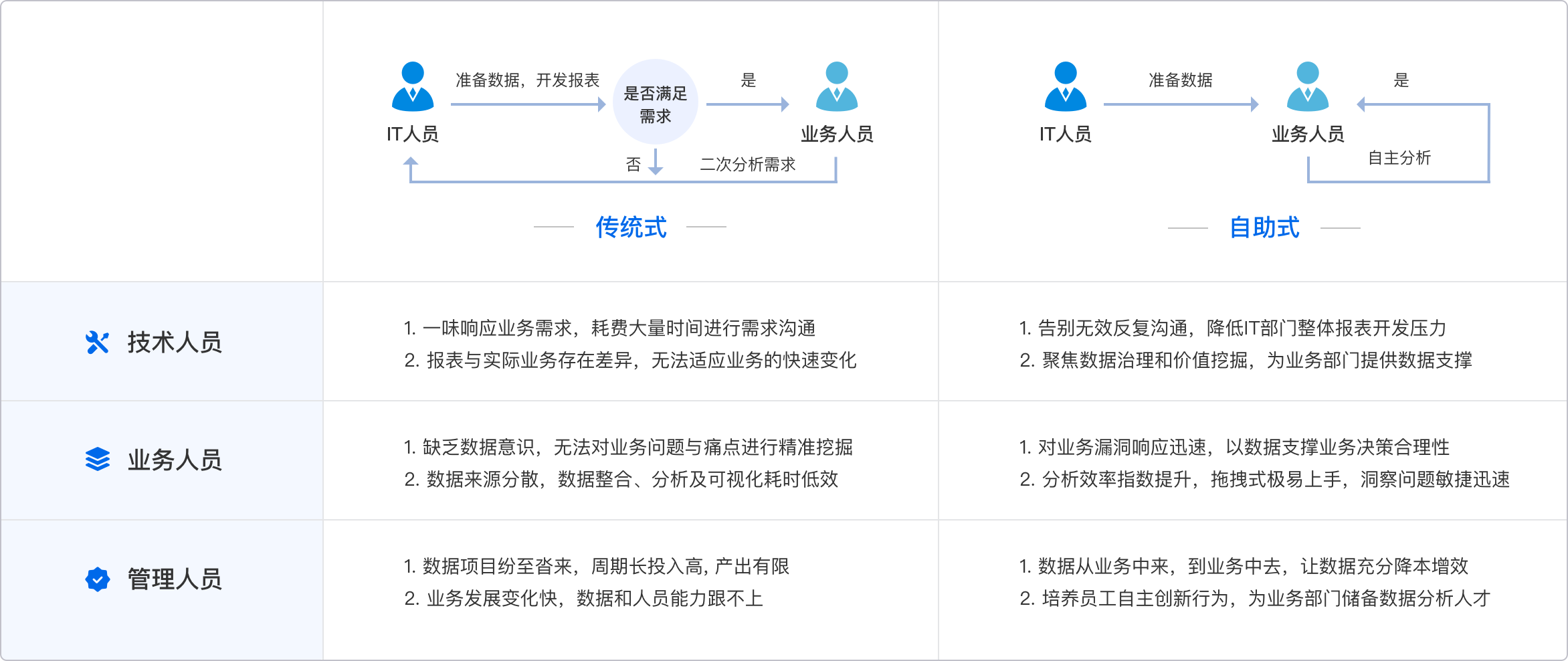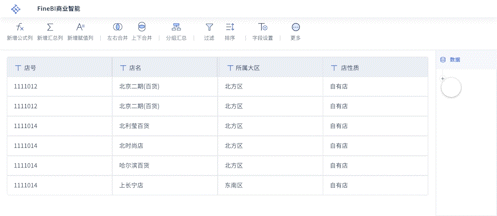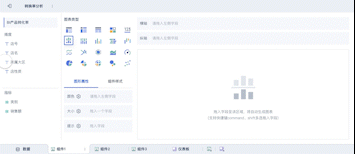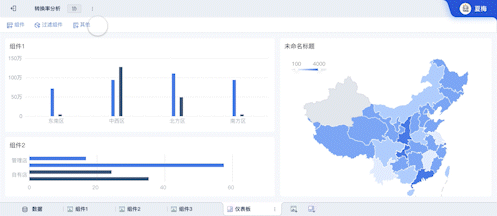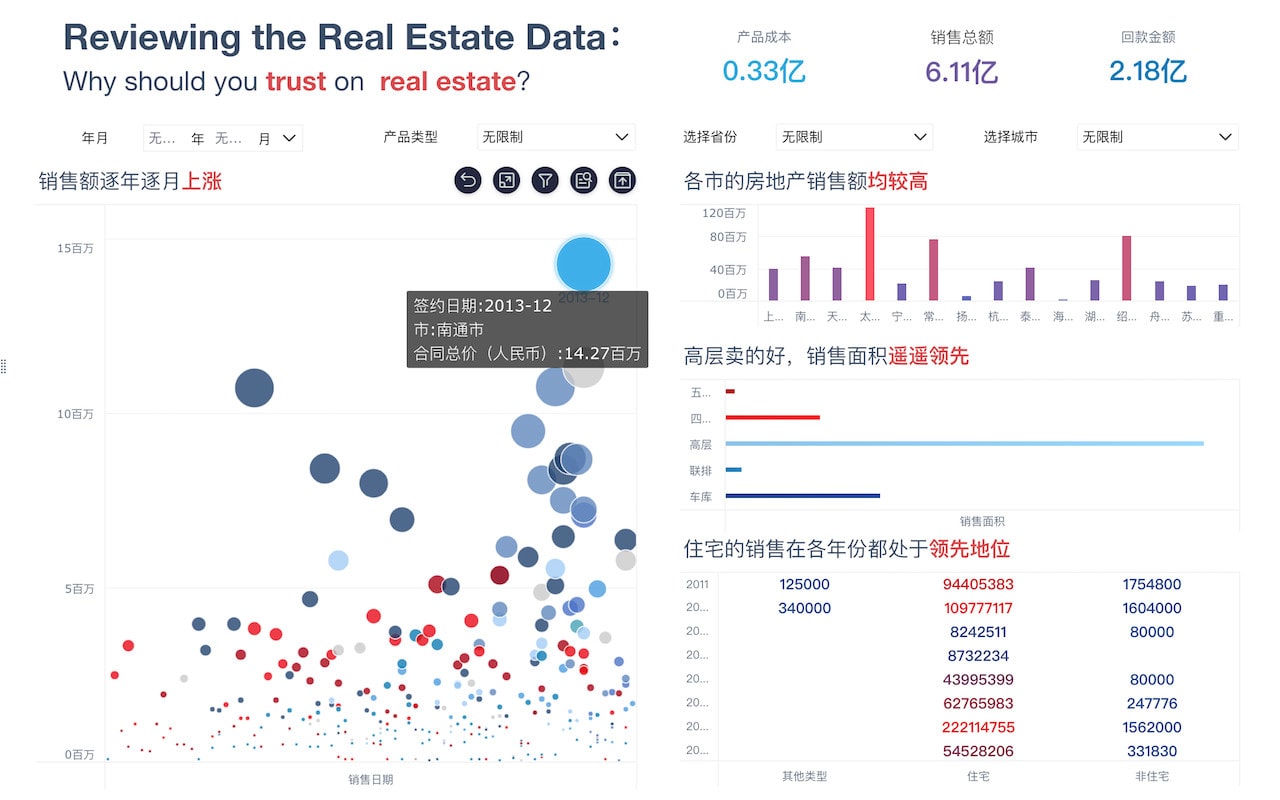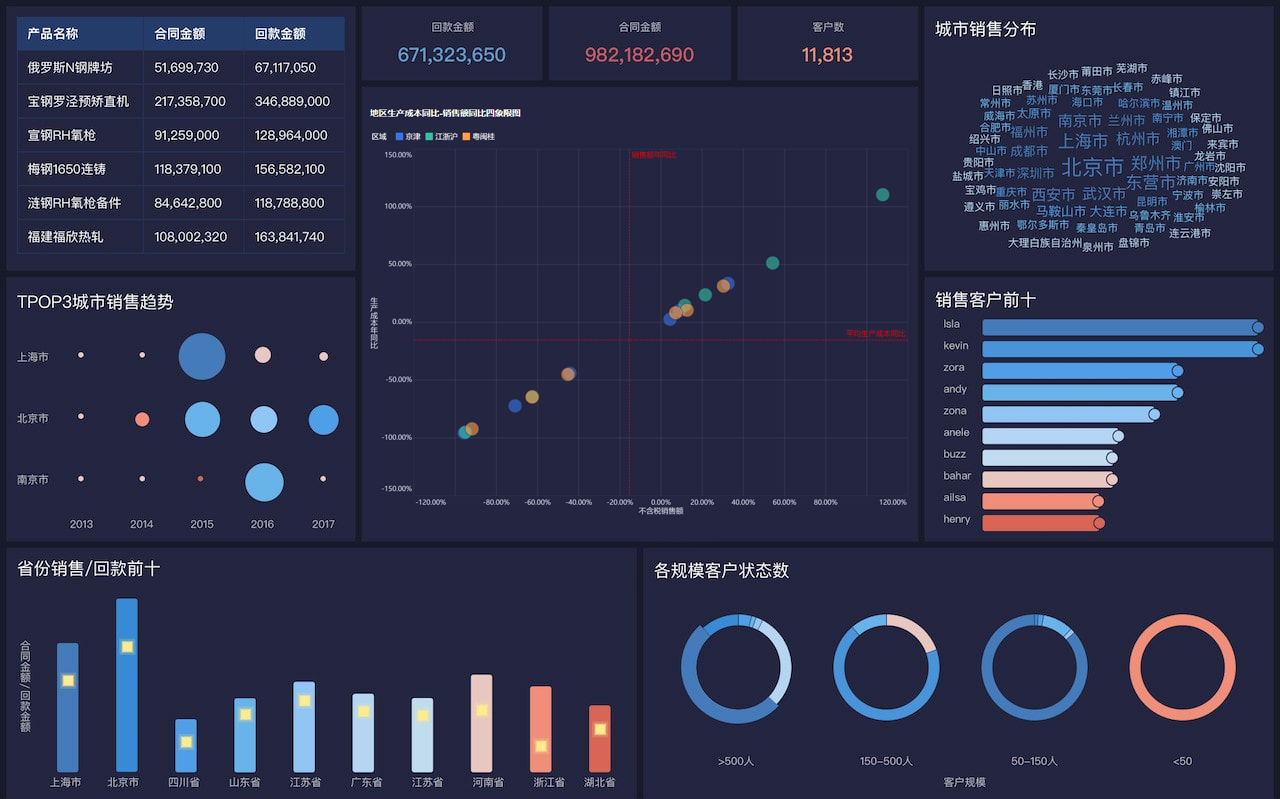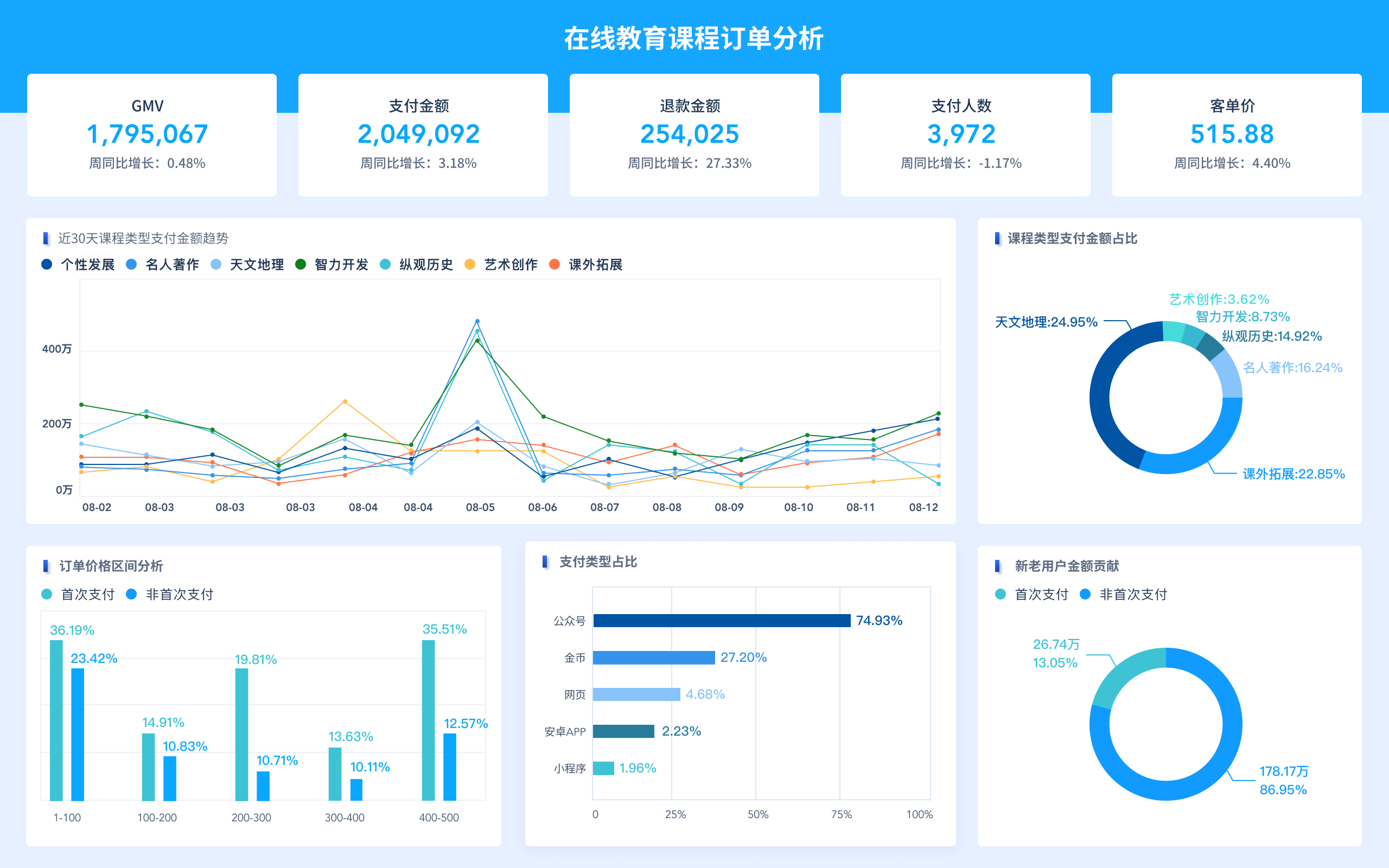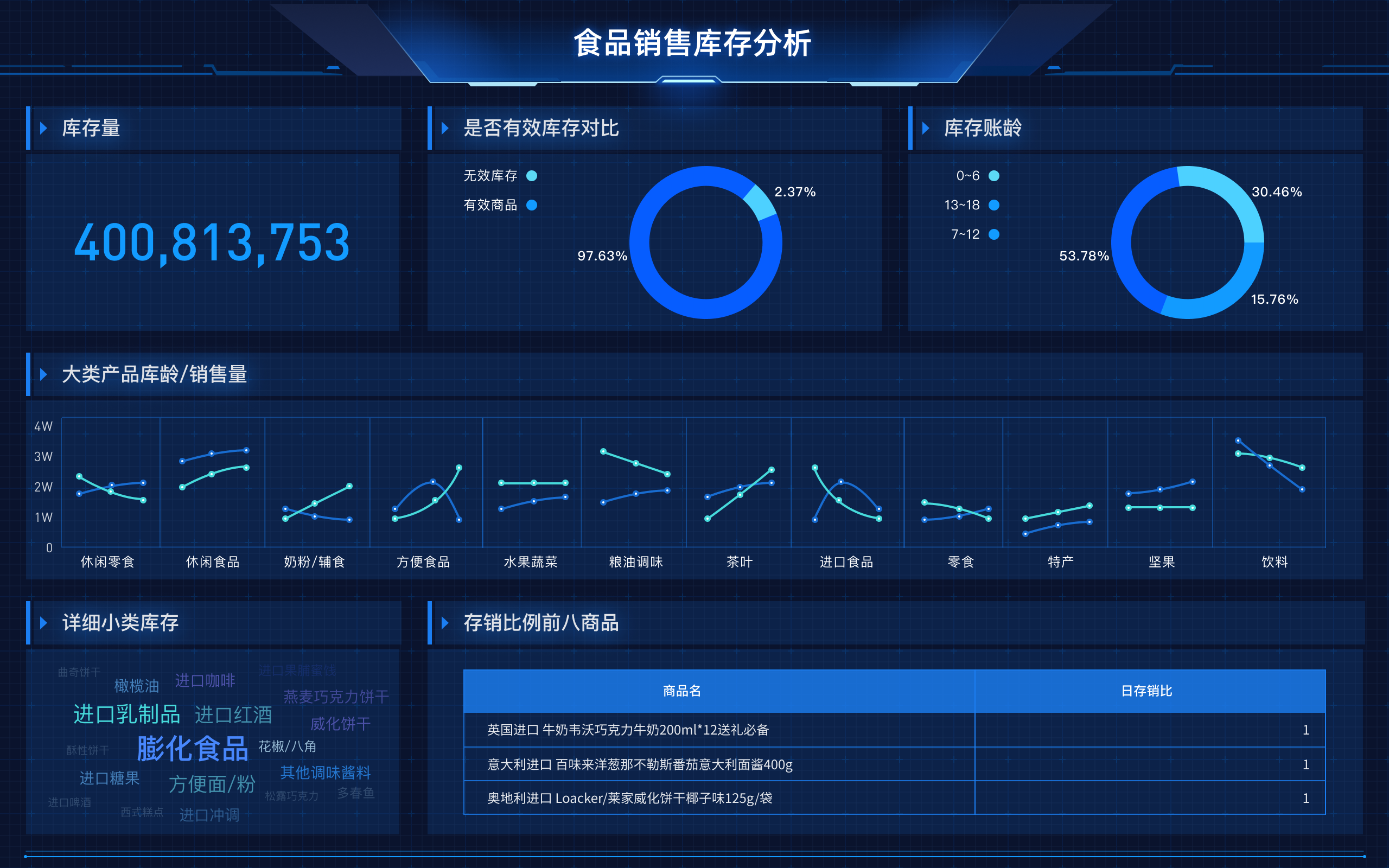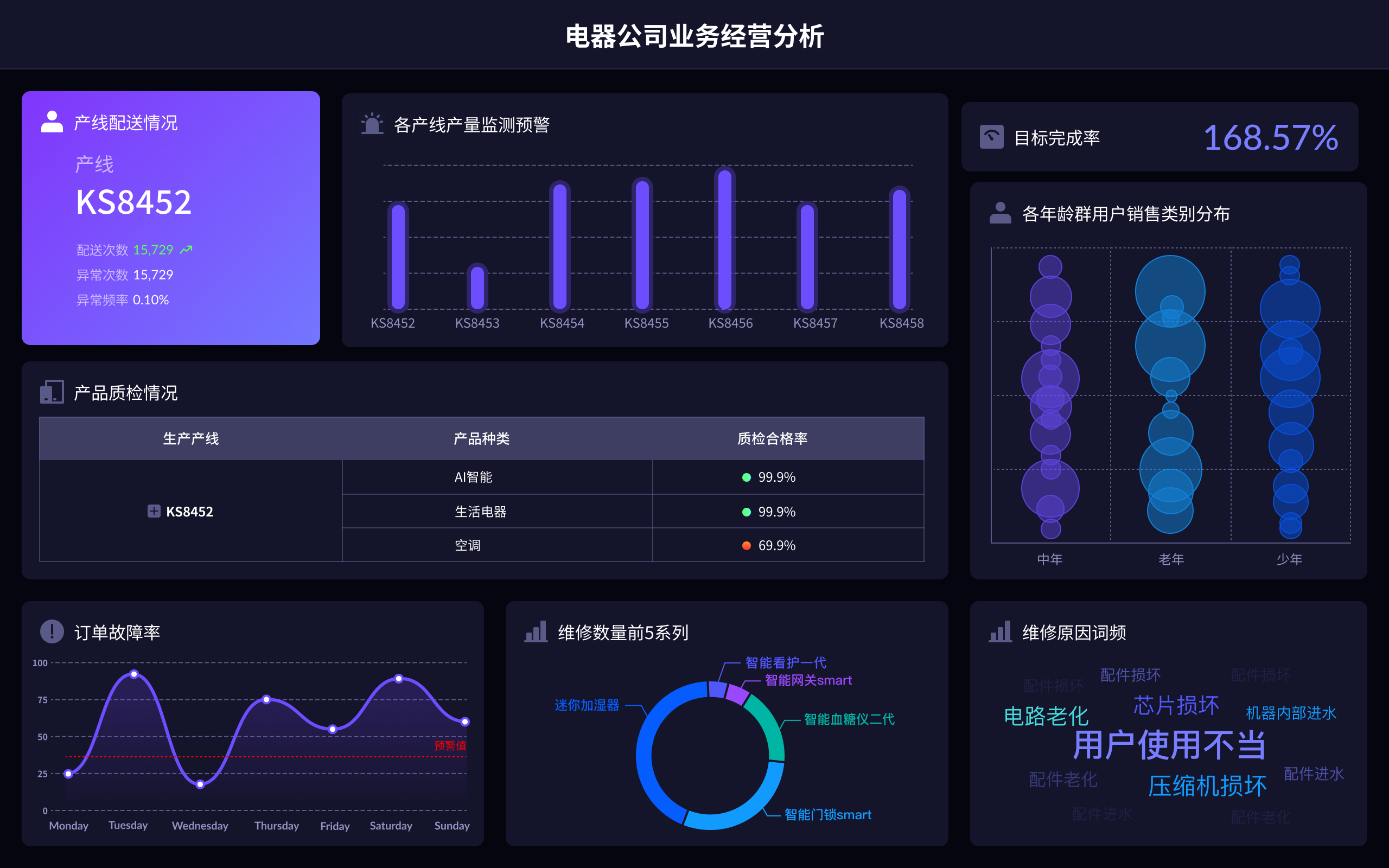
Big data mining cases can be referred to as "Big Data Mining Cases" in English. Examples include fraud detection, customer segmentation, and predictive maintenance. Fraud detection is particularly important in financial institutions and e-commerce platforms. By analyzing transaction data and identifying patterns indicative of fraudulent activity, companies can prevent significant financial losses and protect their customers. Using machine learning algorithms, these systems can continuously improve and adapt to new types of fraud, making them more effective over time.
I、FRAUD DETECTION
Fraud detection is a critical use case of big data mining, especially in the financial and e-commerce sectors. Fraud can take many forms, including unauthorized credit card transactions, identity theft, and false insurance claims. By leveraging large datasets, companies can detect anomalies and patterns that indicate fraudulent activity. The process involves collecting transaction data, customer profiles, and historical fraud cases, and then applying machine learning algorithms to identify suspicious behavior. For instance, if a credit card is suddenly used in a foreign country shortly after being used locally, the system can flag this as potential fraud. Machine learning models like decision trees, neural networks, and support vector machines are commonly used. These models are trained on historical data to recognize the characteristics of fraudulent transactions, such as unusual spending patterns, multiple small transactions in quick succession, or transactions from geographically distant locations. Once trained, these models can analyze real-time transaction data to identify and prevent fraud. Implementing such systems not only reduces financial losses but also enhances customer trust and satisfaction. Financial institutions, e-commerce platforms, and insurance companies are continually refining their fraud detection algorithms to keep up with evolving tactics used by fraudsters.
II、CUSTOMER SEGMENTATION
Customer segmentation is another powerful application of big data mining. Businesses use segmentation to categorize their customers into distinct groups based on specific criteria such as demographics, purchasing behavior, and preferences. This enables companies to tailor their marketing strategies and product offerings to meet the unique needs of different customer segments. For example, an e-commerce platform might use big data to segment its customers into groups such as frequent buyers, occasional shoppers, and one-time purchasers. By analyzing purchasing patterns, browsing history, and customer feedback, businesses can create detailed profiles of each segment. Machine learning algorithms like k-means clustering and hierarchical clustering are often employed for this purpose. These algorithms group customers based on similarities in their data, helping businesses identify trends and patterns that may not be immediately obvious. With this information, companies can develop targeted marketing campaigns, personalized recommendations, and special promotions to engage each customer segment effectively. This not only boosts sales but also enhances customer loyalty and satisfaction. In addition, customer segmentation helps businesses identify high-value customers who may warrant special attention or exclusive offers. Retailers, banks, and online service providers are just a few examples of industries that benefit from customer segmentation through big data mining.
III、PREDICTIVE MAINTENANCE
Predictive maintenance is a significant application of big data mining in industries such as manufacturing, transportation, and utilities. By analyzing data from sensors and equipment, companies can predict when a machine or component is likely to fail and take preventive action. This approach not only reduces downtime but also extends the lifespan of equipment and lowers maintenance costs. Predictive maintenance involves collecting data from various sources, including sensors, historical maintenance records, and operational logs. Machine learning models such as regression analysis, neural networks, and decision trees are then used to analyze this data and predict future failures. For example, in a manufacturing plant, sensors on machinery can monitor temperature, vibration, and other indicators of wear and tear. If the data shows that a particular machine is operating outside of normal parameters, the system can alert maintenance teams to inspect and repair the equipment before a breakdown occurs. This proactive approach minimizes unplanned downtime and ensures that production schedules are not disrupted. In the transportation industry, predictive maintenance can be used to monitor the health of vehicles, such as airplanes, trains, and trucks. By analyzing data from engines, brakes, and other critical systems, companies can identify potential issues and address them before they lead to costly failures or accidents. Utilities can also benefit from predictive maintenance by monitoring the condition of infrastructure such as pipelines, power lines, and transformers. By identifying and addressing potential issues early, utilities can ensure a reliable supply of electricity, water, and gas to their customers.
IV、HEALTHCARE ANALYTICS
Healthcare analytics is a rapidly growing field where big data mining plays a crucial role. By analyzing vast amounts of patient data, medical records, and research studies, healthcare providers can improve patient outcomes, optimize treatment plans, and advance medical research. One significant application is predictive analytics, which helps in identifying patients at risk of developing certain conditions. For instance, by analyzing electronic health records (EHRs), doctors can identify patterns and risk factors associated with chronic diseases like diabetes and heart disease. Machine learning models can predict which patients are likely to develop these conditions, allowing for early intervention and preventive care. Another application is personalized medicine, where treatment plans are tailored to the individual characteristics of each patient. By analyzing genetic data, lifestyle factors, and treatment responses, healthcare providers can develop customized treatment plans that are more effective and have fewer side effects. Big data mining also aids in identifying trends and patterns in disease outbreaks, enabling public health officials to respond more rapidly to emerging health threats. Additionally, healthcare analytics can optimize hospital operations by predicting patient admission rates, optimizing staff schedules, and managing resources more efficiently. This not only improves patient care but also reduces costs and enhances the overall efficiency of healthcare systems.
V、MARKET BASKET ANALYSIS
Market basket analysis is a popular technique in retail and e-commerce that uses big data mining to understand customer purchasing behavior. By analyzing transaction data, businesses can identify associations between products that are frequently bought together. This information is invaluable for cross-selling, upselling, and optimizing product placement. For example, a supermarket may find that customers who buy bread are also likely to buy butter. By placing these items close to each other, the store can increase sales of both products. Machine learning algorithms like association rule learning, including the Apriori algorithm, are commonly used for market basket analysis. These algorithms analyze large datasets to identify frequent itemsets and generate association rules. The resulting insights can inform marketing strategies, promotional campaigns, and inventory management. For instance, an e-commerce platform can use market basket analysis to recommend related products to customers during the checkout process, increasing the average order value. Additionally, businesses can use this analysis to identify seasonal trends and adjust their inventory accordingly. Retailers can also personalize their marketing efforts by sending targeted promotions to customers based on their purchasing habits. By understanding the relationships between different products, companies can create more effective marketing strategies and enhance the shopping experience for their customers.
VI、SOCIAL MEDIA ANALYTICS
Social media analytics is an essential application of big data mining in today's digital age. By analyzing data from social media platforms, businesses can gain valuable insights into consumer behavior, brand perception, and market trends. This information can inform marketing strategies, product development, and customer engagement efforts. For example, sentiment analysis can be used to gauge public opinion about a brand or product by analyzing social media posts, comments, and reviews. Machine learning algorithms can classify these texts as positive, negative, or neutral, providing businesses with a clear picture of their brand's reputation. Additionally, social media analytics can identify key influencers and brand advocates who can help amplify marketing messages. By understanding the demographics and interests of their audience, companies can create more targeted and effective social media campaigns. Social media analytics also helps businesses stay ahead of market trends by identifying emerging topics and conversations. For instance, a fashion retailer can monitor social media to spot new trends and quickly adjust their inventory to meet changing consumer preferences. Moreover, social media data can be used to analyze customer feedback and improve products and services. By addressing common complaints and incorporating customer suggestions, businesses can enhance their offerings and increase customer satisfaction.
VII、SUPPLY CHAIN OPTIMIZATION
Supply chain optimization is another critical area where big data mining can make a significant impact. By analyzing data from various stages of the supply chain, companies can improve efficiency, reduce costs, and enhance overall performance. This involves collecting data from suppliers, manufacturers, distributors, and retailers, and then using machine learning models to identify bottlenecks, predict demand, and optimize inventory levels. For example, predictive analytics can forecast future demand based on historical sales data, seasonal trends, and market conditions. This allows companies to adjust their production schedules and inventory levels accordingly, reducing the risk of stockouts or overstock situations. Big data mining can also identify inefficiencies in the supply chain, such as delays in transportation or production, and suggest ways to address them. By optimizing routes and schedules, companies can reduce transportation costs and improve delivery times. Additionally, supply chain analytics can enhance supplier management by evaluating supplier performance and identifying potential risks. This enables companies to make more informed decisions about their supplier relationships and mitigate potential disruptions. Furthermore, big data mining can improve demand forecasting by analyzing various factors such as market trends, economic indicators, and consumer behavior. Accurate demand forecasts help companies plan their production and inventory more effectively, reducing waste and improving customer satisfaction.
VIII、HUMAN RESOURCES ANALYTICS
Human resources (HR) analytics is an emerging field where big data mining is transforming how companies manage their workforce. By analyzing employee data, organizations can gain insights into talent acquisition, employee engagement, and performance management. For instance, predictive analytics can help HR departments identify the best candidates for open positions by analyzing resumes, job applications, and social media profiles. Machine learning models can predict which candidates are most likely to succeed in a given role based on their skills, experience, and past performance. HR analytics can also improve employee retention by identifying factors that contribute to employee turnover. By analyzing data on employee satisfaction, engagement, and performance, companies can develop strategies to address these issues and retain top talent. For example, if data shows that employees in a particular department are more likely to leave, HR can investigate the underlying causes and take corrective action. Additionally, HR analytics can optimize training and development programs by identifying skill gaps and measuring the effectiveness of training initiatives. By tailoring training programs to the specific needs of employees, companies can enhance their skills and improve overall performance. Furthermore, HR analytics can support performance management by providing data-driven insights into employee productivity and effectiveness. By setting clear performance metrics and regularly monitoring progress, organizations can ensure that their employees are meeting their goals and contributing to the company's success.
IX、ENERGY MANAGEMENT
Energy management is a crucial application of big data mining, particularly in the context of smart grids and renewable energy sources. By analyzing data from energy consumption patterns, weather conditions, and grid performance, utilities can optimize energy production and distribution. This not only enhances efficiency but also supports sustainability efforts. For example, predictive analytics can forecast energy demand based on historical consumption data, weather forecasts, and other relevant factors. This allows utilities to adjust their energy production and distribution in real-time, ensuring a reliable supply while minimizing waste. Big data mining can also identify inefficiencies in the energy grid, such as transmission losses or equipment failures, and suggest ways to address them. By monitoring the performance of grid components, utilities can perform predictive maintenance and prevent costly outages. Additionally, energy analytics can support the integration of renewable energy sources, such as solar and wind power, by predicting their output and managing their variability. By balancing the supply from renewable sources with traditional power plants, utilities can ensure a stable and sustainable energy supply. Furthermore, big data mining can help consumers manage their energy usage more effectively by providing insights into their consumption patterns and suggesting ways to reduce energy waste. Smart meters and home energy management systems can collect data on household energy use and provide real-time feedback to consumers, helping them make more informed decisions about their energy consumption.
X、FINANCIAL ANALYTICS
Financial analytics is a vital application of big data mining that helps businesses and investors make informed decisions. By analyzing financial data, market trends, and economic indicators, companies can optimize their financial strategies and improve their performance. For instance, predictive analytics can forecast market trends and identify investment opportunities by analyzing historical price data, trading volumes, and economic indicators. Machine learning models can identify patterns and correlations that may not be immediately apparent, helping investors make more informed decisions. Financial analytics can also support risk management by identifying potential risks and developing strategies to mitigate them. By analyzing data on market volatility, credit risk, and operational risk, companies can develop more robust risk management frameworks. Additionally, big data mining can optimize financial planning and budgeting by providing insights into revenue trends, cost drivers, and profitability. By analyzing financial statements, transaction data, and market conditions, companies can develop more accurate financial forecasts and make more informed budgeting decisions. Furthermore, financial analytics can enhance customer relationship management by analyzing customer data to identify high-value clients and tailor financial products and services to their needs. By understanding customer behavior and preferences, financial institutions can develop more effective marketing strategies and improve customer satisfaction.
XI、RETAIL ANALYTICS
Retail analytics is a powerful application of big data mining that helps retailers optimize their operations and enhance the customer experience. By analyzing data from sales transactions, customer interactions, and inventory levels, retailers can gain valuable insights into their business performance and customer behavior. For example, predictive analytics can forecast future sales based on historical sales data, seasonal trends, and market conditions. This allows retailers to adjust their inventory levels and staffing schedules accordingly, reducing the risk of stockouts or overstock situations. Retail analytics can also enhance customer relationship management by analyzing customer data to identify high-value customers and tailor marketing strategies to their needs. By understanding customer preferences and purchasing behavior, retailers can develop targeted promotions and personalized recommendations that increase customer loyalty and drive sales. Additionally, big data mining can optimize store layouts and product placements by analyzing customer traffic patterns and sales data. By placing high-demand products in prominent locations and optimizing shelf space, retailers can increase sales and improve the shopping experience. Furthermore, retail analytics can support supply chain management by analyzing data from suppliers, manufacturers, and distributors to identify inefficiencies and optimize inventory levels. By streamlining the supply chain and reducing lead times, retailers can ensure that products are available when and where customers want them.
XII、CYBERSECURITY
Cybersecurity is a critical application of big data mining that helps organizations protect their systems and data from cyber threats. By analyzing data from network traffic, system logs, and security incidents, companies can identify potential threats and respond to them more effectively. For instance, anomaly detection algorithms can analyze network traffic patterns to identify unusual activity that may indicate a cyber attack. Machine learning models can classify these anomalies as potential threats and alert security teams to investigate further. Big data mining can also support threat intelligence by analyzing data from various sources, such as threat feeds, security reports, and social media, to identify emerging threats and attack patterns. By staying informed about the latest threats, organizations can develop more effective defense strategies and mitigate potential risks. Additionally, cybersecurity analytics can enhance incident response by providing insights into the nature and scope of security incidents. By analyzing data from system logs and security alerts, companies can identify the source of an attack, assess its impact, and develop a response plan. Furthermore, big data mining can support compliance and audit efforts by analyzing data on security policies, access controls, and user activity. By ensuring that their security practices meet regulatory requirements and industry standards, organizations can reduce the risk of data breaches and avoid costly fines and penalties.
XIII、TELECOMMUNICATIONS ANALYTICS
Telecommunications analytics is a key application of big data mining that helps telecom companies optimize their networks and improve customer satisfaction. By analyzing data from network performance, customer usage patterns, and service quality, telecom companies can enhance their operations and deliver better services to their customers. For example, predictive analytics can forecast network demand based on historical usage data, seasonal trends, and market conditions. This allows telecom companies to optimize their network capacity and ensure a reliable service for their customers. Telecommunications analytics can also identify network issues, such as congestion or outages, and suggest ways to address them. By analyzing data from network performance metrics and customer complaints, telecom companies can quickly identify and resolve issues, minimizing downtime and improving service quality. Additionally, big data mining can enhance customer relationship management by analyzing customer data to identify high-value customers and tailor marketing strategies to their needs. By understanding customer preferences and usage patterns, telecom companies can develop targeted promotions and personalized recommendations that increase customer loyalty and drive revenue. Furthermore, telecommunications analytics can support the development of new products and services by analyzing market trends and customer feedback. By identifying emerging technologies and customer needs, telecom companies can develop innovative solutions that meet the demands of their customers and stay ahead of the competition.
XIV、SMART CITIES
Smart cities are an innovative application of big data mining that aims to improve urban living by leveraging data from various sources, such as sensors, social media, and public services. By analyzing this data, city planners and administrators can optimize urban infrastructure, enhance public services, and improve the quality of life for residents. For instance, traffic management systems can analyze data from road sensors, GPS devices, and traffic cameras to optimize traffic flow and reduce congestion. By providing real-time traffic updates and suggesting alternative routes, these systems can improve commute times and reduce pollution. Big data mining can also support public safety efforts by analyzing data from crime reports, surveillance cameras, and social media to identify patterns and trends in criminal activity. By deploying resources more effectively and developing targeted crime prevention strategies, cities can enhance public safety and reduce crime rates. Additionally, smart cities can use data analytics to optimize energy consumption by analyzing data from smart meters and energy grids. By identifying patterns in energy usage and suggesting ways to reduce waste, cities can promote sustainability and reduce energy costs. Furthermore, big data mining can improve public services by analyzing data on service usage, feedback, and performance. By identifying areas for improvement and developing data-driven solutions, cities can enhance the quality and efficiency of public services, such as healthcare, education, and transportation.
XV、AGRICULTURE ANALYTICS
Agriculture analytics is a transformative application of big data mining that helps farmers optimize their operations and increase crop yields. By analyzing data from sensors, weather forecasts, and historical crop performance, farmers can make more informed decisions about planting, irrigation, and harvesting. For example, precision agriculture uses data from soil sensors, satellite imagery, and weather stations to optimize planting and irrigation schedules. By providing real-time insights into soil moisture levels, nutrient content, and weather conditions, these systems help farmers apply the right amount of water and fertilizers at the right time, reducing waste and improving crop yields. Big data mining can also support pest and disease management by analyzing data from field sensors and remote sensing technologies. By identifying early signs of pest infestations or disease outbreaks, farmers can take preventive action and minimize crop losses. Additionally, agriculture analytics can enhance supply chain management by analyzing data from suppliers, distributors, and market conditions. By optimizing the
相关问答FAQs:
What is the English term for 大数据挖掘案例?
The English translation for "大数据挖掘案例" is "big data mining case" or "case study in big data mining." This term refers to specific examples or instances where big data mining techniques have been applied to extract valuable insights, trends, and patterns from large datasets.
Why are big data mining case studies important?
Big data mining case studies are crucial for several reasons. They provide real-world examples of how organizations utilize big data to solve complex problems, make informed decisions, and gain competitive advantages. By analyzing these case studies, businesses can learn about successful strategies, potential pitfalls, and best practices in data mining. They also serve as educational resources for data scientists, analysts, and students, showcasing the practical applications of theoretical concepts in data mining.
Where can I find examples of big data mining case studies?
There are numerous resources available for finding big data mining case studies. Academic journals often publish research papers that include case studies on big data applications across various industries such as healthcare, finance, retail, and more. Additionally, industry reports and white papers from consulting firms like McKinsey, Deloitte, and Gartner frequently highlight successful big data projects. Online platforms like Kaggle and GitHub also feature community-driven case studies and datasets that can be used for practical learning. Furthermore, attending conferences and webinars related to data science and analytics can provide insights into real-world applications and innovative uses of big data mining.
本文内容通过AI工具匹配关键字智能整合而成,仅供参考,帆软不对内容的真实、准确或完整作任何形式的承诺。具体产品功能请以帆软官方帮助文档为准,或联系您的对接销售进行咨询。如有其他问题,您可以通过联系blog@fanruan.com进行反馈,帆软收到您的反馈后将及时答复和处理。


